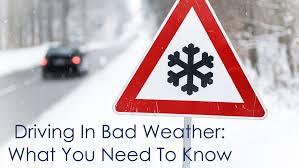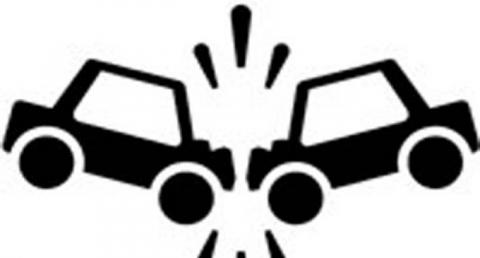



Winter Driving Advice
· Clean off all ice and snow from your car, especially from windows and all lights. This includes your roof, hood, and trunk lid. Keep a good ice scraper in your car.
· Drive with all your lights on for increased visibility during the daytime and not just parking lights. With only parking lights, it can create depth perception issues for other drivers, ESPECIALLY IN FOG.
· All-season tires are okay, but the touring and touring plus have a harder rubber composite that can get really hard with cold temps. Snow tires aren't different by tread only, they have softer rubber that helps the slipping grip better. They are noticeably better in winter weather. Make sure your tires have proper air inflation.
· Make sure you have good windshield wipers and plenty of windshield wiper fluid.
· Add some extra weight over the rear axles of your vehicle. It even helps with front wheel drives, but is especially beneficial for all-wheel and rear wheel. Keep your gas tank full as much as you can as this adds some weight to the vehicle and for some vehicles, it adds it more to the rear.
· The law for following distance is two seconds. Its recommend three seconds when you hit 55 mph. We also suggest that you add a second for each hazard. So, if roads are bad, add a second. If it's actively snowing, add another second. If it's foggy, dark, and roads are slushy, that's three extra seconds of following distance you should add.
· If you're traveling significantly slower than traffic around you, turn on your hazards and stay in the right lane.
· Brake gently to avoid skidding when slowing. If your wheels start to lock up, ease off the brake.
· Use low gears to keep traction, especially on hills.
· REDUCE YOUR SPEED!!
· Don't use cruise control or overdrive on icy roads.
· Be especially careful on bridges, overpasses and infrequently traveled roads, which will freeze first. Even at temperatures above freezing, if the conditions are wet, you might encounter ice in shady areas or on exposed roadways like bridges.
· Don't pass snow plows, especially when they are traveling in a staggered group. The drivers have limited visibility and you're likely to find the road in front of them worse than the road behind.
· Don't assume your vehicle can handle all conditions. Even four-wheel and front-wheel drive vehicles can encounter trouble on winter roads.
If your rear wheels skid...
· Try not to panic.
· Take your foot off the accelerator.
· Steer in the direction you want the front wheels to go. If your rear wheels are sliding left, steer left. If they're sliding right, steer right.
· If your rear wheels start sliding the other way as you recover, ease the steering wheel toward that side. You might have to steer left and right a few times to get your vehicle completely under control.
· If you have standard brakes, pump them gently.
· If you have anti-lock brakes (ABS), do not pump the brakes. Apply steady pressure to the brakes. You will feel the brakes pulse — this is normal.
If your front wheels skid...
· Try not to panic.
· Take your foot off the gas and shift to neutral (only if possible), but don't try to steer immediately.
· As the wheels skid sideways, they will slow the vehicle and traction will return. As it does, steer in the direction you want to go. Then put the transmission in "drive" or release the clutch, and accelerate gently.
More Winter Driver Tips
· Leave early
· Drive only when necessary
· Do not follow too close
· Move over/slow down for emergency vehicles
· REDUCE YOUR SPEED!
· Be aware of increased stopping distances on snow, ice and water
· Concentrate on driving, not outside distractions
· Bring cell phone, extra clothes, blankets, food, and water for emergency if you're traveling far and/or in less populated places.
If you are in an accident...
· Stay in your vehicle with your seat belt on
· Call 911
· If you're in the road or on the road side and your vehicle is drivable, call 911 and tell them you're moving your vehicle off the road and/or to a safer location, then let them know where you're moving your vehicle to (this should go without saying, but...). If that's not possible, stay in your vehicle until law enforcement or EMS personnel arrive.
· And finally, REDUCE YOUR SPEED!